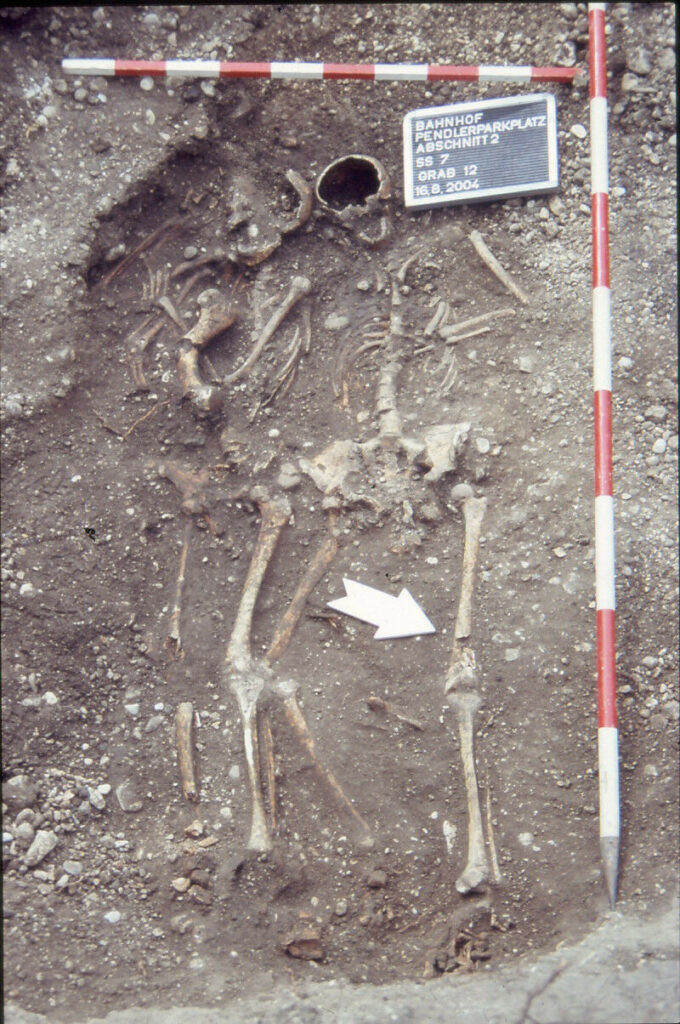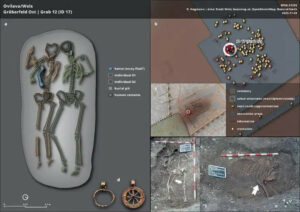Unearthing a Surprising Discovery
In 2004, construction work in Wels, Upper Austria, uncovered an extraordinary grave at the site of the ancient Roman city of Ovilava. Initially thought to be a medieval burial, this discovery would soon challenge assumptions and offer a unique glimpse into Roman life nearly two millennia ago.

From Medieval Lovers to Roman Family
What was first believed to be the tomb of a married couple and their horse from the early medieval period turned out to be something far more ancient and intriguing. Radiocarbon dating placed the burial in the 2nd to 3rd century CE, firmly within the Roman era. More surprisingly, genetic analysis revealed that the two human occupants were not lovers, but a mother and daughter – the first genetically confirmed double burial of first-degree relatives from Roman Austria.

A Story Written in Bones
A Mother’s Love and Status
The older woman, aged 40-60, was found embracing her daughter, who was around 20-25 years old. Osteological examinations of the mother’s remains showed signs of frequent horseback riding, explaining the presence of the horse in the grave and hinting at her elevated social status.

Precious Grave Goods
Golden pendants shaped like a crescent moon and a wheel, dating to the 2nd century CE, were found with the bodies. These artifacts further confirmed the Roman origins of the burial and suggested the family’s wealth and importance.
Rewriting Roman History
Challenging Conventional Wisdom
This discovery offers new insights into Roman society and culture. The double burial of mother and daughter, along with a horse, was highly unusual and speaks to the depth of familial bonds and the potential influence of women in Roman communities.
A Window into the Past
By combining archaeological evidence with modern scientific techniques, researchers have painted a vivid picture of life in Roman Austria. This grave not only tells the story of two individuals but also challenges our understanding of family relationships, social hierarchies, and women’s roles in ancient Roman society.

The story of this mother and daughter, frozen in an eternal embrace, continues to fascinate and educate us about the complex tapestry of Roman life, prompting further exploration into the lives of those who shaped the cultural landscape of their time.

